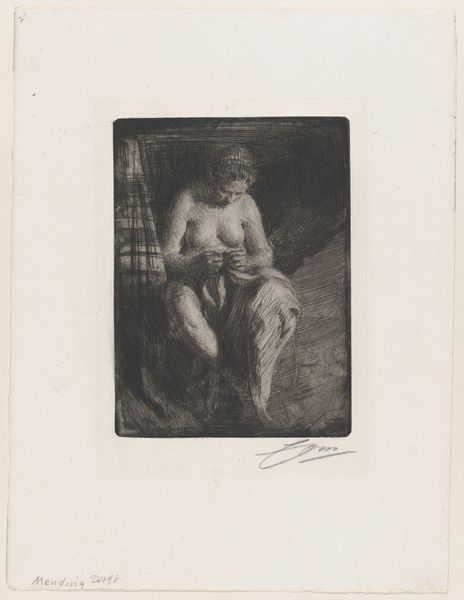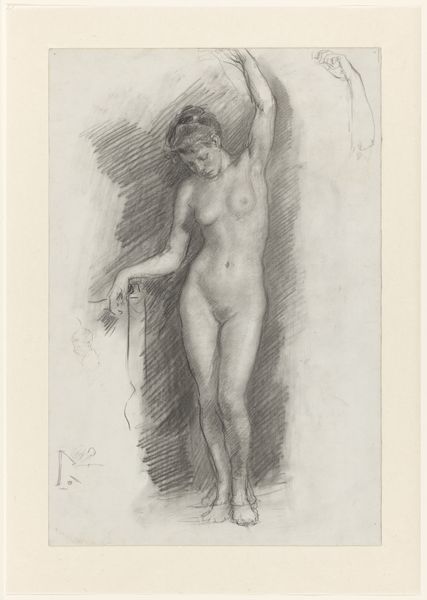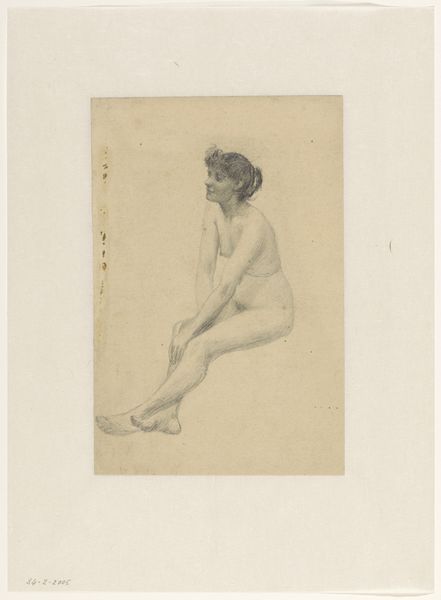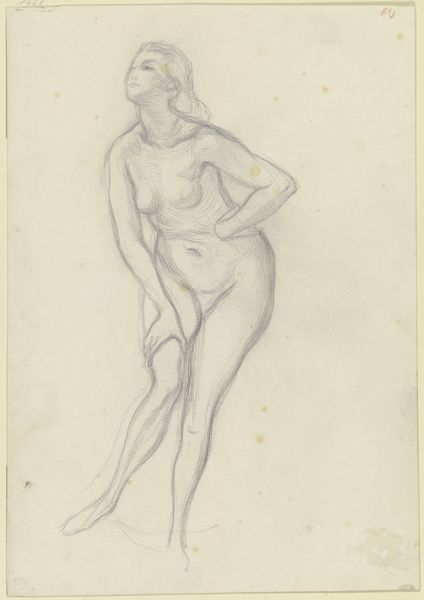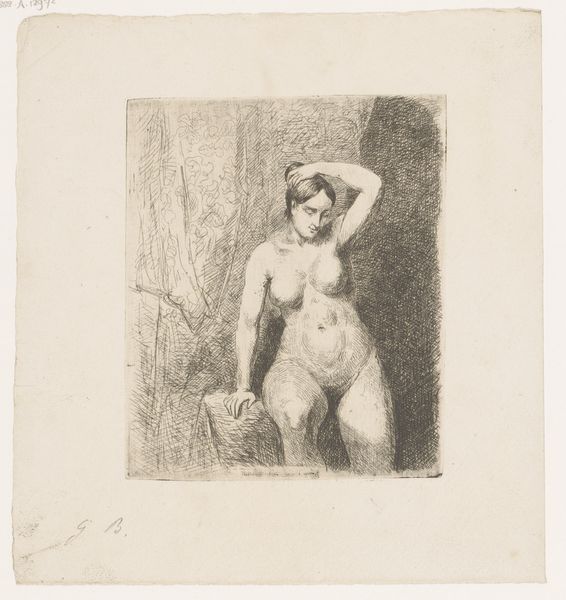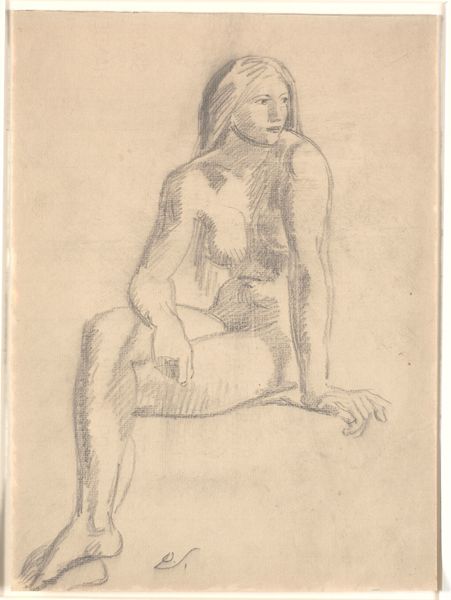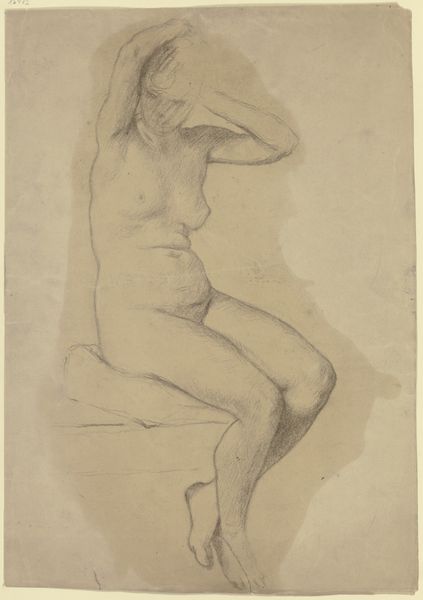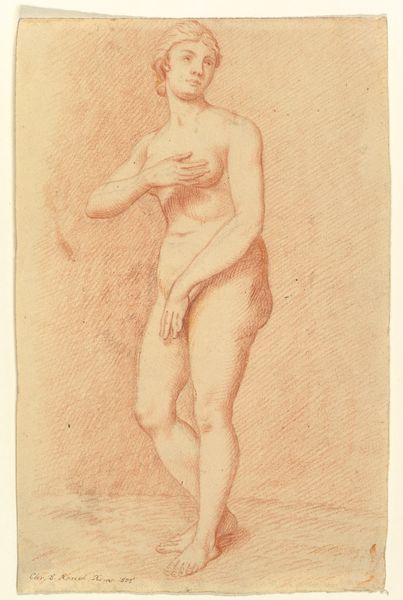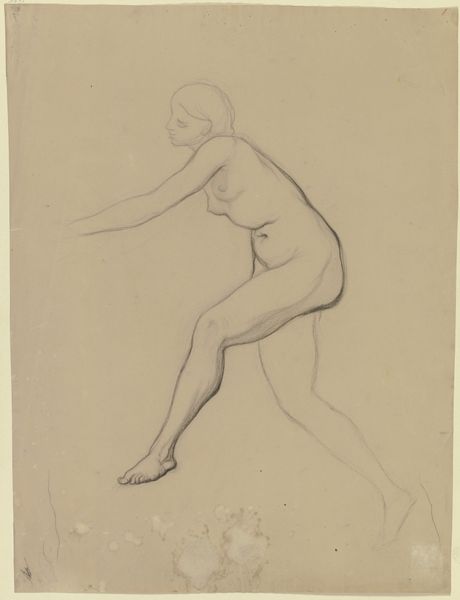
drawing, pencil
#
portrait
#
drawing
#
pencil drawing
#
pencil
#
academic-art
#
nude
#
realism
Dimensions: height 317 mm, width 233 mm
Copyright: Rijks Museum: Open Domain
Curator: Here we have Georges Bellenger's pencil drawing, dating sometime between 1857 and 1915, entitled "Bescheidenheid," which translates to "Modesty". Editor: The grayscale lends a certain somberness, doesn’t it? The figure's downward gaze and the shading seem to close her off, almost protectively, from the viewer. It’s quite melancholic. Curator: Pencil work such as this played a vital role in academic training. Note the detailed, albeit idealized, rendering of the female nude form. Bellenger was working within established conventions and appealing to bourgeois patrons. Think about the social context: Who could afford such art and what messages were they hoping to convey through its display? Editor: The application of shading to model the body is interesting; note the tenebrism, creating a clear contrast between light and shadow. Bellenger sculpts the form masterfully, but the surface treatment of the surrounding area seems like it was done to give her some negative space and thus enhance her form. It calls to mind classical statuary. Curator: Absolutely, the medium informs the message. It's not just about aesthetic appreciation but understanding the economics and labor embedded in art production during this period. Why pencil rather than oil paint, for example? What opportunities did this choice create or restrict for Bellenger as a working artist? Editor: I think this medium invites an intimate viewership, something a larger scale work would fail at, something similar to the quiet that echoes in Ingres’ drawings. There is some drama in that shadowed background, but is this about external drama? I don't think so; the mood feels deeply personal and psychological. Curator: Right, we shouldn’t overlook how such images both reflected and shaped the prevailing ideals surrounding female representation and virtue within that 19th-century society. It’s a window into their expectations and anxieties. Editor: I see it too, beyond social norms or technical skills; the formal balance here creates a profound study on form and feeling, of the vulnerability inherent in being seen. Curator: Well said; together, both materiality and visuality deepen our understanding of "Bescheidenheid." Editor: Indeed, this drawing offers plenty to consider from both perspectives, material and formal.
Comments
No comments
Be the first to comment and join the conversation on the ultimate creative platform.


